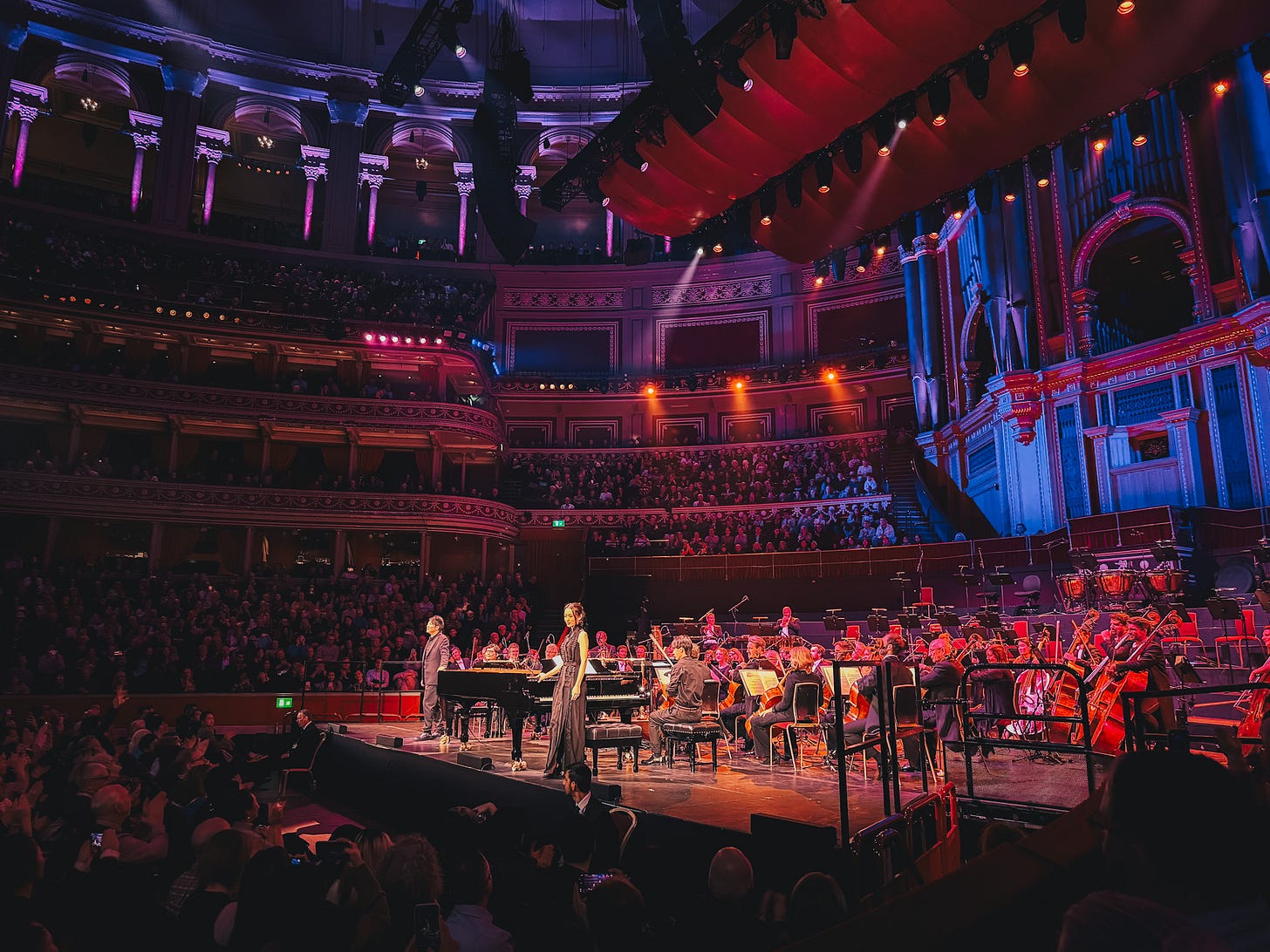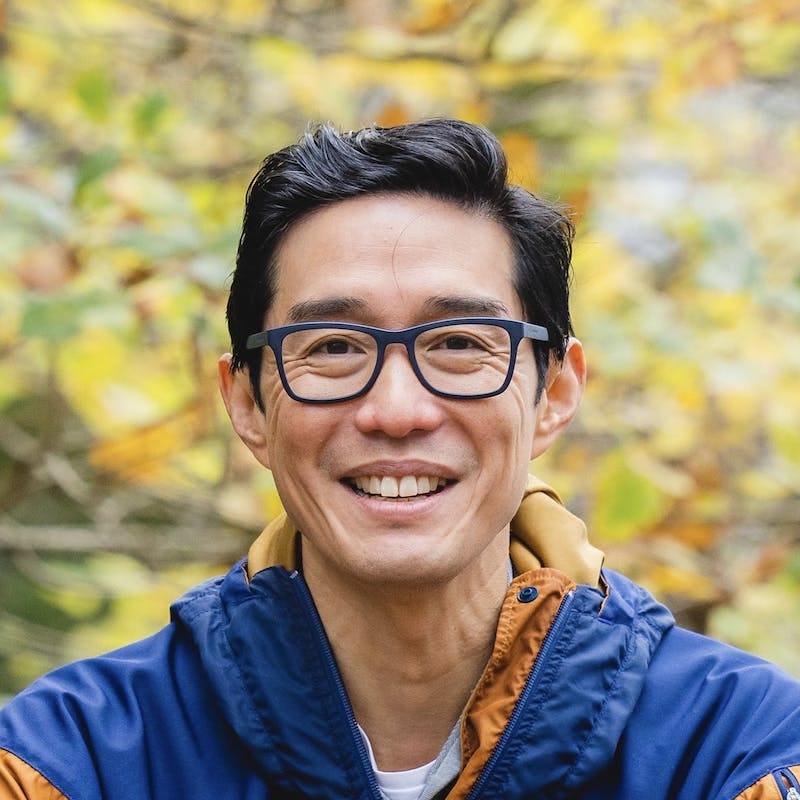He walked on stage earlier this evening and gave an exquisite performance. I've never before experienced the sheer delight of the lightness, aliveness and intimacy in the soundscape crafted by a pianist.
I got a distinction in Grade 8 piano when I was 15. But this performance was of a Grade 100.
The pianist the New York Times heralded as "the hottest artist on the classical music planet" was on stage a few metres in front of me - fingers, and body, dancing to Saint-Saëns Piano Concerto No 2 and, with Gina Alice, The Carnival of the Animals.
What was remarkable was Lang Lang's presence. There wasn't a jot of anxiety or fear.
Can I be sure of that?
Of course, not. But he was like an accomplished actor who is so attuned to the presence they bring to a space that the air seems to vibrate at a different energy. It's not necessarily logical, but it was deeply palpable.
Have you ever had that feeling of rustling leaves in your stomach when you're preparing for a big client presentation?
Have you noticed your body shift ever so slightly when you hear two colleagues now at loggerheads about what is right in the recent Israel-Palestine conflagration?
Or what about that spot that wells up in the pit of your stomach - and pulses over and over again - when you don't know the answer to a question a client has asked you?
Anxiety: the two-headed emotion
Anxiety is like Janus, the two-headed Roman God, who frequently symbolised change and transitions: the progress of past to future, from one condition to another, from one vision onto another.
And so with anxiety, it can propel us forward by urging us to prepare for a presentation so it can go without a hitch.
But, anxiety can, as I've noticed more frequently of late in the communities I'm part of, and the clients I work with, that it can also trap us, frozen in the moment, preventing us from moving forward.
If we scratch the surface and explore, these tendrils of anxiety weave a web through the innermost parts of our body and can tangle themselves up so much that the anxiety endures. Constantly and consistently reminding us of what is making us anxious in the first place.
Anxiety diminishes our presence. It takes the shine off the energy we bring. It makes us stumble to find the right notes on the keyboard.
The common way of overcoming anxiety
If you think about how the tendrils of anxiety entrapped you in the past, you might have been tempted to overcome it in the way most of us tend to deal with anxiety.
We try to ignore it.
We tell it to go away.
According to some public speakers, we might try venturing into the toilet before a big presentation, look ourselves in the mirror and roar as if we are tigers in the jungle.
Maybe those work. But I'm hazarding a guess that they're like a magician who's unwittingly revealed the secret behind the trick! Try as you might, but your anxiety returns, and you stumble.
Greeting Janus
I wanted to share with you an alternative approach.
It's one that I've practised for a few years, but have only recently brought into my coaching with clients.
It's unusual because it doesn't involve talking ourselves out of our anxiety, as we might through talk therapy approaches, like Cognitive Behavioural Therapy.
It's also one that doesn't engage the main mode in which we all operate: doing.
As someone who is successful and can turn their hands exceptionally well to many things, doing comes second nature to so many of us.
Our hyper-focus helps us solve problems, tick things off our to-do list, and then move on to the next thing.
Strategic thinking solves problems. But when it comes to anxiety, doing doesn't meet the mark.
Yet, when de-prioritise doing, and utilise the other part of our processing power - our being, namely our sensing, receptive, emotional self, we expand the scope of our intelligence and internal resources we bring.
For my clients who have experienced anxiety, uncertainty or any other challenging emotions, shifting from doing-mode to being-mode brings an equanimity
The presence and energy Lang Lang brought onto the stage wasn't from his mode of doing, it was from his being.
Over to you! Four steps from anxiety to equanimity
So how do we access our mode of being to release the tendrils of anxiety?
Rather than running away from anxiety, we turn towards it. In other words, we take time to explore both of Janus's heads!
The practice is simple. But like many disciplines, we need to practise.
Step 1. When you notice anxiety or another challenging emotion, focus on intentionally relaxing your out-breath.
Step 2. Notice, without judgement, what is going on inside of you.
What are you feeling?
What sensations do you notice?
Where is the anxiety occurring?
What does the anxiety feel like? Is it like a pain? Does it radiate from a point? Is it pulsating? Describe what you notice.
Step 3. Avoid the natural instinct for your brain to take over and rationalise what's going on, and connect back with what you notice happening in your body. Try this for a few minutes.
Step 4. After a few minutes of noticing (steps 2 + 3), you might ask yourself, "What is my anxiety urging me to do?” You might just get the answer to solving the anxiety that was hidden away inside of you all along.
Tips
Step 3 will most probably be the most difficult step to master. But if you continue to focus on your feelings, paying attention to what is going on inside your body - without judgement and simply observing - some new learning, insight, or creativity will spring forth.
In the book "Healer as Leader" which won the award for Business Book of the Year 2023, the author, Nicholas Janni, notes:
“one of the most common patterns of disconnection [ie when your brain re-takes control] is reflected in the simple words: 'I feel that'. A sentence beginning with those words will always be a thought, not a feeling. An accurate response to the questions 'How are you feeling?' begins with 'I feel...' followed by one variation or combination of the four primary emotions [fear, anger, joy or sadness]”.
ps If you’re an entrepreneur, a lawyer or another high-flying professional - who might be feeling anxiety at year end, meeting budgets, or planning for your next career move - and want someone to help you build a healthy brain for a career that’s full of success and joy and feels effortless, get in touch and let’s have a conversation.
That’s it for this week!
As always, I appreciate your feedback on Effortless Thursdays.
If Effortless Thursdays resonated with you, I'd be grateful if you told just one friend to subscribe. They and you can always unsubscribe using the link below.
What did you think of this week’s edition? How can I make it more useful to you? Let me know in the comments, by email, on Twitter or on LinkedIn.
To your health and success!
Eric










I'm saving this edition. The paragraph about his presence ... exquisite!
This is a big subject Eric! I wish I could have seen that performance, it sounds amazing. I need to look this artist up. I recently bought a book I found on Amazon called, "Speaking Up Without Freaking Out" which attempts to cover all the variable and nuances of physiological anxiety and what we can do with it when it arises. What I'm finding out is that there's really no one answer. Everyone finds their own means of aligning in mind, body, and spirit in a way that helps them meet the moment in the best possible way. I find that moving my body when I have excess energy from anxiety is very helpful. Exercising vigorously before a big presentation can help channel and ground the extra energy. Engaging in my body helps me to avoid giving too much energy to rumination, which definitely does not help. Another hack I've used is to focus on something I know is going to go well in the day. My anxiety often revolves around the fear that a presentation won't go well, but if I keep my attention on something that is going well, or that is going to happen later in the day, meeting a friend, a nice meal, the opportunity to go to the gym—it helps me relax somehow.